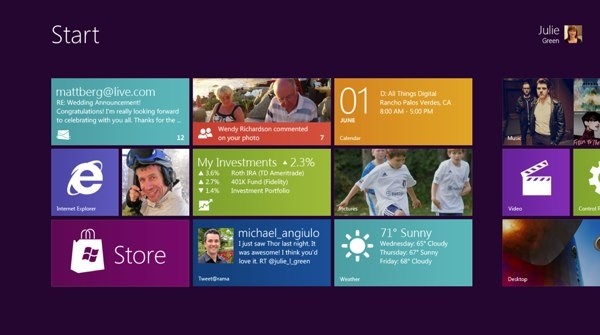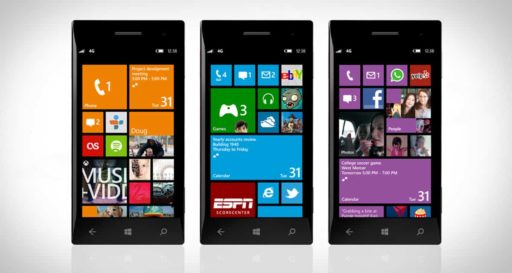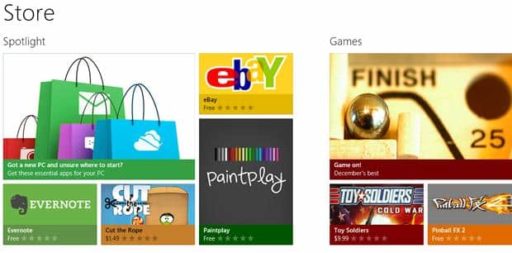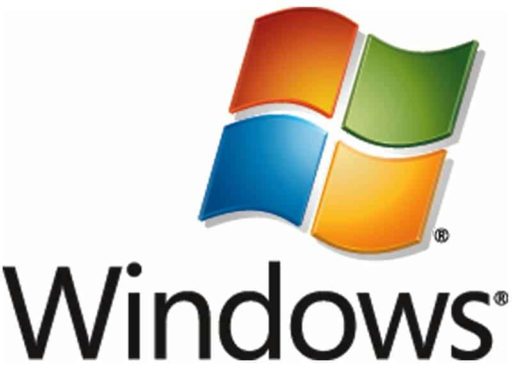There’ll be two kinds of applications for Windows 8, one that runs in a traditional desktop nd the other pseudo-mobile apps based on HTML5 and Javascript. Keyboard and mouse will still be options for both sets of programs, but there are multiple virtual sets of keys for different form factors, including a split keyboard for vertical slate use and multitasking is simply a matter of swiping running apps into the center of the screen………
Microsoft offered the first glimpse of Windows 8, a sneak peek that reveals much about both the influences and the strategic goals of the major overhaul of Microsoft’s 25-year-old operating system. The fundamental goal with the new operating system, which is being shown for the first time at D9, is to create something that is equally well at home on an 8-inch tablet as it is on a powerful desktop attached to a huge monitor. At the heart of the new interface is a new start screen that draws heavily on the tile-based interface that Microsoft has used with Windows Phone 7. All of a user’s programs can be viewed as tiles and clicked on with the touch of a finger. Windows 8 essentially supports two kinds of applications. One is the classic Windows application, which runs in a desktop very similar to the Windows 7 desktop. The other type of application, which has to be written in HTML5 and Javascript, looks more like a mobile application, filling the full screen. Internet Explorer 10, which is part of Windows 8, has already been configured to run in this mode, as have several widget-like apps for checking stock prices and weather.
Although Microsoft didn’t offer any details, the start screen that it is showing on Wednesday includes a prominent link to a store, ostensibly confirming that Microsoft plans to get in the business of directly distributing Windows programs, much as Apple has on both the iPhone and Mac. Windows 8 is clearly influenced by the iPad and other mobile devices, the plan for the new operating system has been in the works since Windows 7 shipped in July 2009–several months before the iPad was first shown. Microsoft has also done work with the classic Windows desktop to make it more touch friendly, including using a new kind of “fuzzy hit targeting” to adjust for the fact that fingers are far less precise than a mouse. The goal, says chief designer Julie Larson-Green, is that classic apps, though designed for a keyboard and mouse, work well with touch. Apps taking advantage of the new programming layer, she said, are designed for touch first, but also work well with a keyboard and mouse. Windows is growing more flexible in other ways. Microsoft said back in January that the next version of Windows would support ARM-based chips from Nvidia, Texas Instruments and Qualcomm, in addition to the traditional Windows processors from Intel and AMD. Though Sinofsky and Green used Intel-based machines for Wednesday’s demo at D9, Microsoft plans to demonstrate some of the ARM-based designs later today at the Computex trade show in Taiwan.
[ttjad keyword=”microsoft”]




